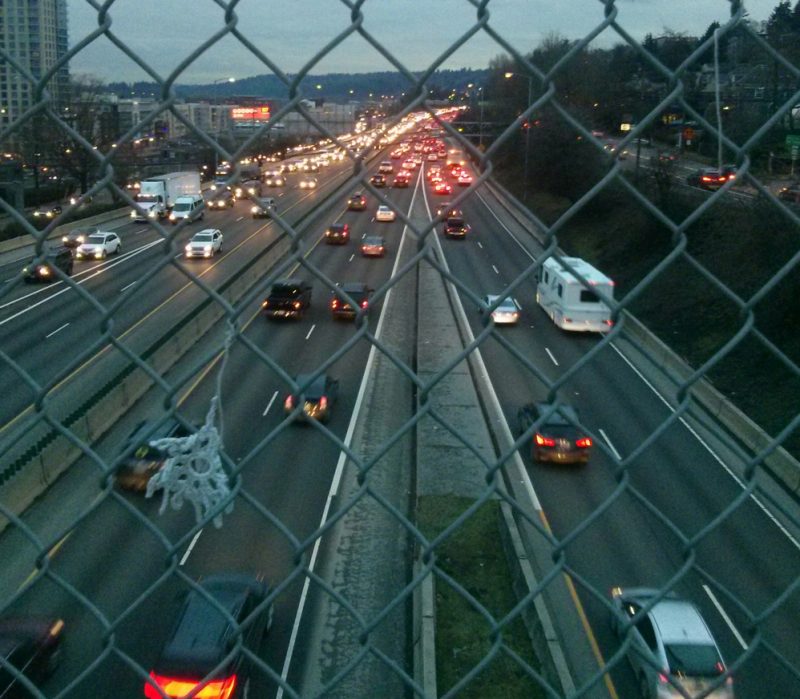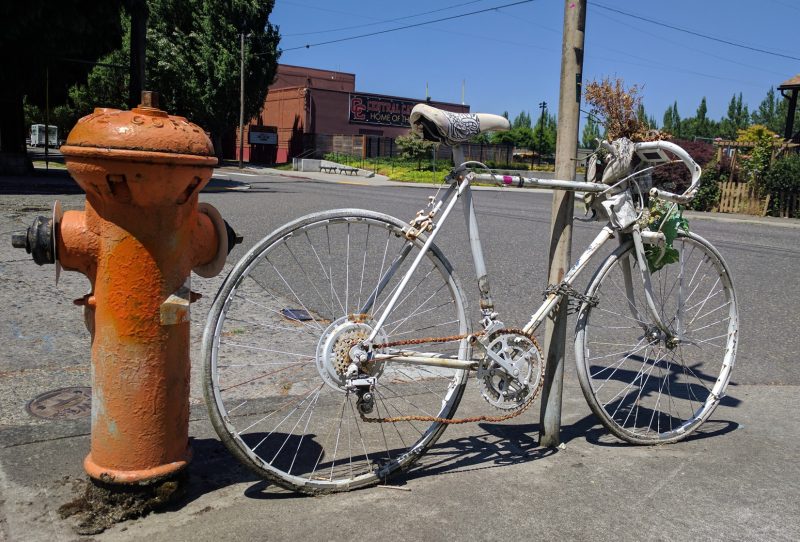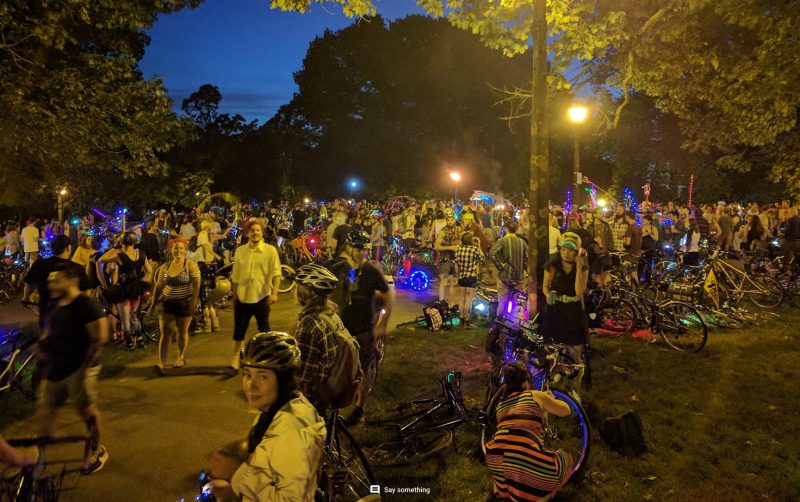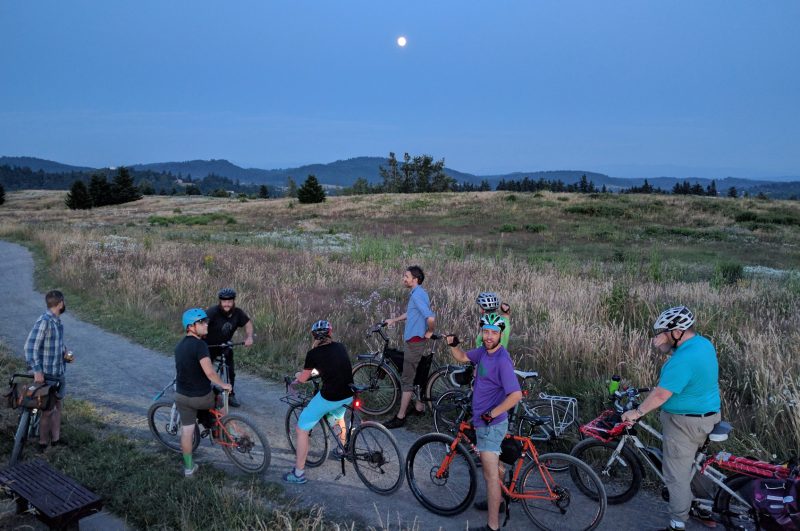
(Photos by Anders Hedlund)
Note: This post is from 34-year-old Anders Hedlund from Linköping, Sweden. I planned to publish this piece today before I decided to run this morning’s post about Mikael Colville-Andersen’s view of Portland. At first I thought it would be strange to post them one after another, but then figured they’d work nicely as a productive comparison. Thanks to Kiel Johnson for making this happen. – Jonathan
One year ago my wife and I left our home, two cats and all of our bikes in Sweden to move to North America ́s premier bike city for a year. Here ́s an attempt to sort out my experiences and thoughts about the PDX bike culture, and compare it to the way cycling is known in Scandinavia.
My wife Elin is a medical researcher and during the years there have been many suggestions and offers for different places to go for an exchange year. When Portland was mentioned she caught my attention – even in Europe Portland is known as a progressive hub for biking. To me, the deal was perfect: her boosting her career and me riding and working with bikes for a year.
“What’s unique to Portland’s bike scene seems to be the social aspect of riding a bike.”
When we arrived last January the rain was pouring and, the first days, I was more or less in shock from the heavy traffic in and around town. Initially I made some beginner mistakes, like crossing Ross Island Bridge on foot and riding my bike on Powell Blvd. Somehow I managed to survive both. Just when my riding confidence started to grow I mistook the pedestrian trail by Pettygroove Park for a bike path – to my surprise there where a set of stairs on the path that send me and my bike flying, with a scattered collar bone as the result. That gave me a firsthand experience with American healthcare (I ended up having to fly back to Sweden for surgery).
After a while I healed up and got the hang of the bike network, but still the sheer number of cars baffled me. Riding a bike with parked cars to the right and passing cars to the left makes you feel that the margins are quite small. For an experienced bike rider, Portland’s bike infrastructure is all right; but someone not so confident with bike handling will have a big challenge the first time. The speed (of both bikes and cars) is high, and there is no room for mistakes.


“When we arrived last January the rain was pouring and, the first days, I was more or less in shock from the heavy traffic in and around town.”
The biggest difference between most Swedish bike infrastructure and Portland’s are that Swedish bike paths is mostly off-street, only for pedestrians and bikes. There are downsides to this: for instance confusion between foot traffic and bikes, the slower speeds, and the most dangerous part – cars crossing the bike path without looking, much less yielding for cyclists. The positive side to the Swedish model is that the network of bike paths are designed to keep you safe, whether you just got rid of your training wheels or you ́ve been biking for decades. The barriers for getting on two wheels are much lower in Sweden. The bike is more often considered a form of transportation that anyone can use. The fact that around 25% of the trips in my hometown Linköping are done by bike can be compared to the 6.3% in Portland.
What’s unique to Portland’s bike scene seems to be the social aspect of riding a bike. Maybe the fact that cyclists are in such a minority on the streets creates a stronger bond between fellow riders? I don ́t know any other city that has the amount of social rides, events and different non-profits that all together make being a cyclist so enjoyable here. For me the non-profit, DIY-workshop Bike Farm became a home away from home. For most of the year I worked at Go By Bike – the bike valet by the aerial tram – where I got to meet some of the hardcore commuters in Portland ́s widespread city.

Advertisement



To me it seems that a big challenge for Portland – as well as most cities in the US – is the fact that cars have been allowed to dictate the way cities were built for so long. The best examples of the contradiction between the way people want to see their city and the way they behave is the joy and celebration on the streets during Sunday Parkways or Last Thursday on Alberta – only to be replaced by the usual invasion of cars when the event is over. Not to mention the contrast between imagination and reality found in the mural on NW Vaughn and 23rd Ave. These things really makes you wonder why the people of Portland don ́t demand access to the streets every day of the year.
“This city really has some great potential and an abundance of fantastic people and communities.”
Linköping is a much smaller city with around 150,000 inhabitants, built around a city center that ́s been around since the 12th century. However, the fact that modern infrastructure and city planning always have let different forms of transportation play a part makes it an easy city to get around in on foot, by bike or bus. Most of the downtown area is closed off to cars, which creates a vibrant atmosphere with thriving businesses. To live in a city that is quiet, with clean air and safe streets with few or no cars makes people warmer and more prone to interact with each other. Less traffic also means that the few vehicles that really need to be in the city will get there on time, and not be stuck in congestions. In the past years more streets in Linköping have been closed off for cars, always with some initially concerned voices that promotes cars. I dare to say that very few want to go back once the change has settled for a year or two. With this said I don ́t mean that Sweden is a cyclist utopia. There is a lot of things left to improve in bike infrastructure, but at least we ́re heading in the right direction.
We live in exciting times, to say the least. Within a few years there will be autonomous cars in the streets, which hopefully will change the way the city is used and looked upon. Less need for parking will allow the city to become denser, less human factors and emotional drivers will create a safer environment, and more efficient transportation will create less pollution and noise.
Some day I hope to come back to a Portland that takes radical steps away from the car centered living we see today. The way transportation works right now just locks people in their cars – when I look at the clogged highways I see so much human and fossil energy go to waste. This city really has some great potential and an abundance of fantastic people and communities.
For me and my wife this year in Portland is about to end. We will return to Sweden and soon give birth to our first child and enjoy a year and a half of paid parental leave. I can only wish you all the best, and I hope to see you on a bike path somewhere in a bright future.
— Anders Hedlund, @veloviner on Twitter
Never miss a story. Sign-up for the daily BP Headlines email.
BikePortland needs your support.

